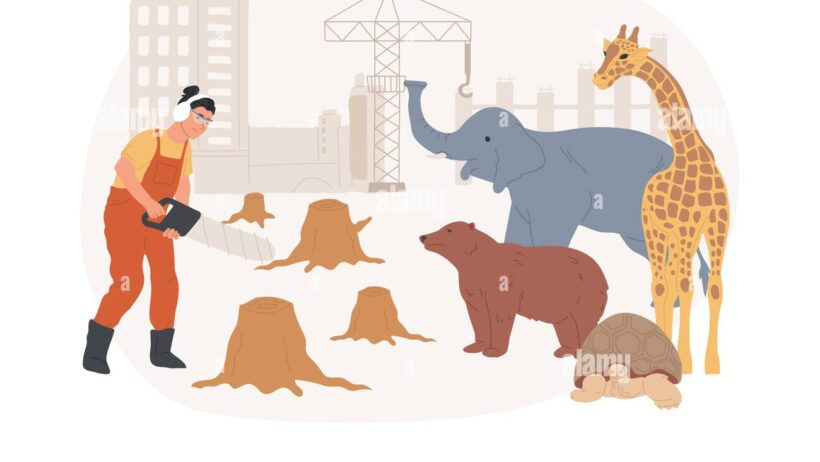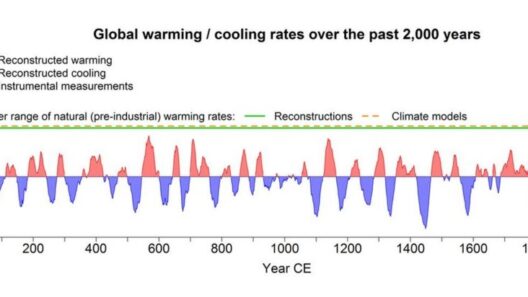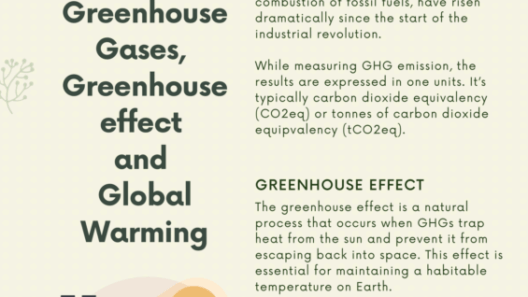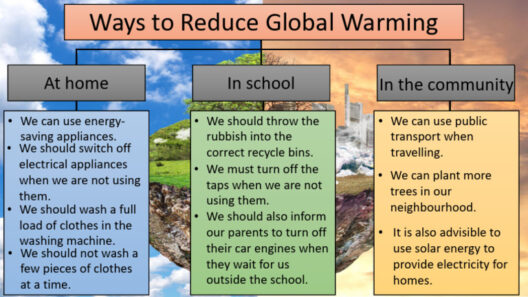The phenomenon of habitat loss is a harbinger of mass extinction, intricately woven into the fabric of global warming’s ecological footprint. As temperatures rise and climate systems shift, wildlife is forced into an increasingly precarious existence. The destruction of natural habitats jeopardizes countless species and ecosystems, creating a ripple effect that could reverberate through our planet for generations. Understanding this dilemma requires a multifaceted exploration of the causes, consequences, and potential solutions to this mounting crisis.
Historically, habitat destruction has fueled human progress, often at the expense of biodiversity. Urban sprawl, deforestation, and agricultural expansion are a few culprits driving the obliteration of crucial ecosystems. These transformations not only strip away the natural world but also invite a sobering question: Are we sacrificing the planet’s ecological diversity for short-term gains? The irony lies in the fact that these habitats do more than nurture wildlife; they also provide services that are indispensable to human survival, such as clean air, fresh water, and climate regulation.
Global warming exacerbates habitat loss in a myriad of ways. As temperature fluctuations become more pronounced, wildlife faces the dire consequences of altered habitats and ecological niches. Species that previously thrived within certain climatic conditions now struggle to survive. For instance, polar bears, quintessential symbols of the Arctic ecosystem, find their ice-based habitats melting beneath them. This scenario is not isolated; it mirrors experiences worldwide, as numerous species are displaced or pushed towards extinction due to insufficiencies in their ecosystems.
The sad irony is that in our quest for modernization, we often overlook the intrinsic value of biodiversity. Each species plays a vital role within its ecosystem. From pollinators like bees to apex predators like wolves, the web of life depends upon a delicate balance. When one species falters or disappears, it can lead to a domino effect that disrupts the entire ecosystem. This concept, known as ecological interdependence, underscores how habitat loss and mass extinction are inextricably linked.
The ongoing crisis of climate change further complicates this equation. Energy consumption, predominantly from fossil fuels, contributes to greenhouse gas emissions, resulting in global temperature increases. As ecosystems respond to these shifts, habitat changes may outpace the ability of some species to adapt. Therefore, species that cannot migrate or adjust quickly enough may face obliteration. The Intergovernmental Panel on Climate Change (IPCC) warns of alarming extinction rates, with projections suggesting that up to one million species are at risk.
To truly grasp the enormity of the situation, one must contemplate the statistics. The World Wildlife Fund’s Living Planet Report reveals that global wildlife populations have plummeted by an average of 68% since 1970. This steep decline serves as a clarion call for immediate action. It serves as a reminder that the planet is on a precarious precipice, hinging on the collective efforts of humanity to mitigate further destruction.
Addressing habitat loss necessitates a paradigm shift; we must adopt a forward-thinking approach that prioritizes conservation and restoration. Effective strategies include establishing protected areas, implementing sustainable land-use practices, and promoting reforestation efforts. Initiatives like these can help safeguard habitats while ensuring their resilience amid changing climatic conditions.
Incorporating community engagement is pivotal. Local stakeholders, indigenous populations, and ecosystem-based management are crucial in devising protective measures that acknowledge both human needs and ecological imperatives. Grassroots movements and collaborative efforts can foster a sense of stewardship, encouraging individuals to advocate for policy changes that protect vulnerable species and their habitats.
Sustainable practices in agriculture, forestry, and fisheries provide additional avenues for mitigating habitat loss. Agroecology offers methods that enhance biodiversity while simultaneously producing food. For instance, permaculture practices aim to create self-sustaining agricultural ecosystems that harmonize with nature rather than exploit it. By integrating sustainable practices into various industries, we can help secure habitats and mitigate climate change impacts.
Moreover, embracing technology and innovation presents opportunities to enhance conservation. Remote sensing, geographic information systems (GIS), and artificial intelligence (AI) can assist in tracking biodiversity and formulating data-driven strategies for conservation. By leveraging these tools, we can more accurately assess the state of habitats and prioritize preservation efforts where they are most needed.
The urgency of addressing habitat loss cannot be overstated. As we confront the dual challenges of climate change and biodiversity loss, a change in perspective is necessary. Recognizing that humanity’s fate is inexorably linked with the health of our planet will piqué curiosity and foster a sense of responsibility. Future generations deserve the chance to experience the rich tapestry of life that our planet has to offer.
Every individual, organization, and government can contribute to the movement against habitat loss and mass extinction. Simple choices, from reducing one’s carbon footprint to advocating for legislation that promotes environmental sustainability, can create profound impacts.
In conclusion, the time for action is now as we grapple with the reality of habitat loss and global warming. It requires commitment, innovation, and collaboration to reverse the destructive path humanity has set. The ecological footprint of global warming is not merely an abstraction; it is a tangible reality that calls for immediate and sustained response. By transforming our relationship with nature, we can pave the way for a sustainable future, where ecological integrity prevails, and biodiversity flourishes once more.








